InDec
SPECULATIVE PRODUCT“Every year, 1.7 million tons of furniture products reach the end of their lives, about 26 kg per capita.”
Problem
In a dystopian future, furniture production has all but ceased due to the EII (Environmental Impact Initiative) to stop global destruction. Citizens of society inhabit sterile concrete dwellings, and are only allowed a bed, a table, and a set of chairs. A room without color or personal flare makes for a sad existence. Unless...
Solution
How might we design an interior decorating experience for a society who no longer has access to physical decorative products? InDec is a speculative device that provides users with a holographic interior decorating experience.
Context
Senior Project
Senior Project
Role
Full Stack Designer
Full Stack Designer

SPECULATION
A real problem in a fictional world
Background
One of my favorite fictional worlds of all time is the Blade Runner universe. I’ve sometimes found myself daydreaming about futuristic technologies and living in a neon cyberpunk paradise. I stumbled across a video called The UI of Blade Runner and was hooked. This inspired my senior project, and InDec was born.
Ethical issues of today and tomorrow
Fast furniture is an epidemic of poorly manufactured items that are produced at a mass scale. These pieces are inexpensive to the buyer, and are made of such low quality materials that they end up in landfills soon after purchase. This in turn causes cyclical abuse to the environment, and eventually to us. The alarming statistics of furniture waste helped me to form a narrative, and gave me a problem that needed to be solved.
The future is digital
In my hypothetical dystopian future, physical decor is out of the picture; the only options left would be virtual or augmented reality decor. VR would require everyone in the space to have a headset, and when the user removes it, the experience disappears. With hologram-based AR, the experience is permanent. All of the users in the room can see and interact with the decor, and only one device is needed.
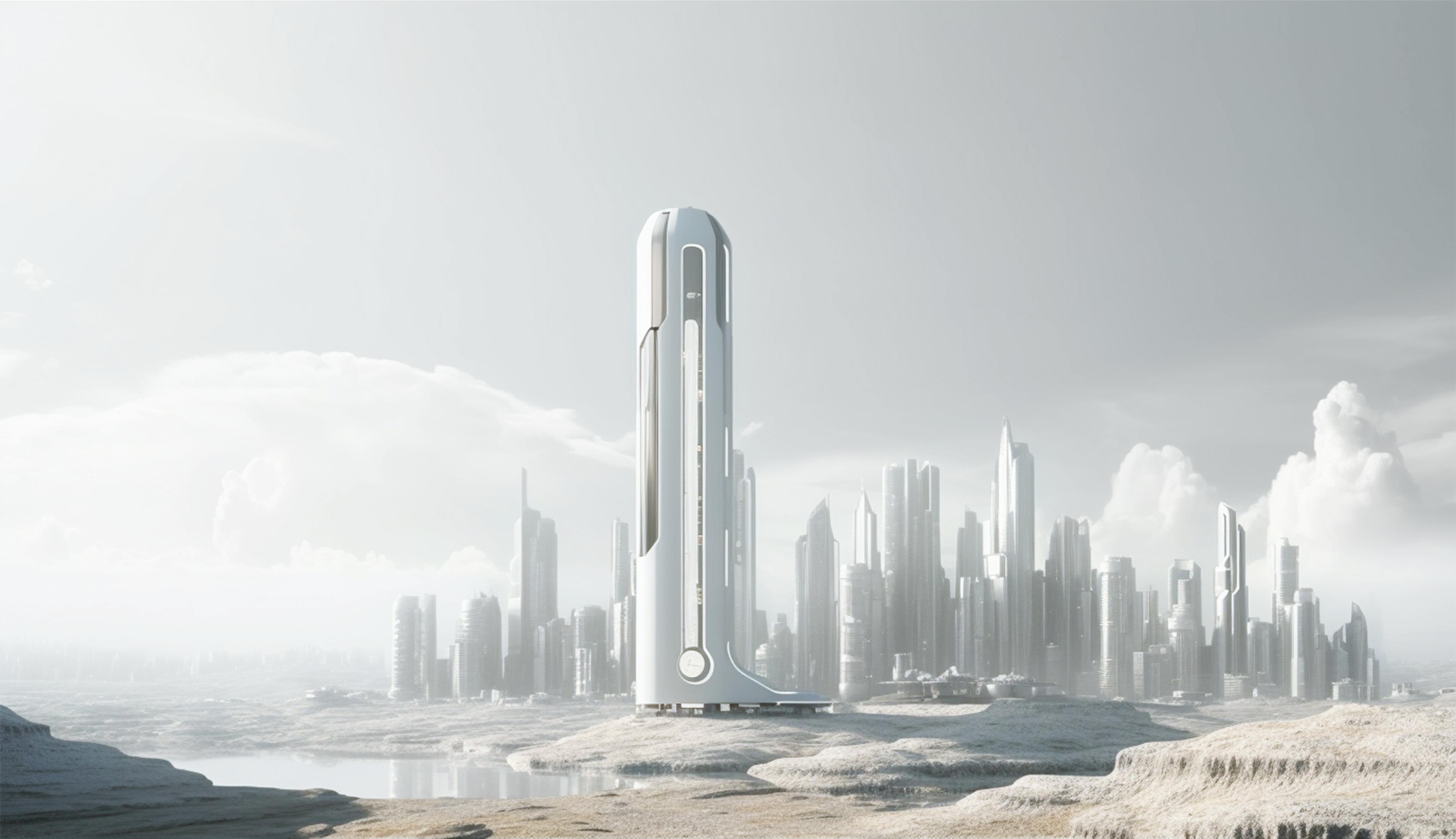
DISCOVERING USERS
Who is InDec for, exactly?
While InDec can technically be for anyone, it primarily targets the average middle class citizen. It’s no secret that even in the future, high-class citizens will have more access to physical product and decor items, unlike those who can’t afford to bypass societal rules. InDec’s users would likely be comprised of creative people, artists, curators and collectors. People who use InDec might work-from-home or be in their space often. The core user group are those who value adding some flair to their surroundings.
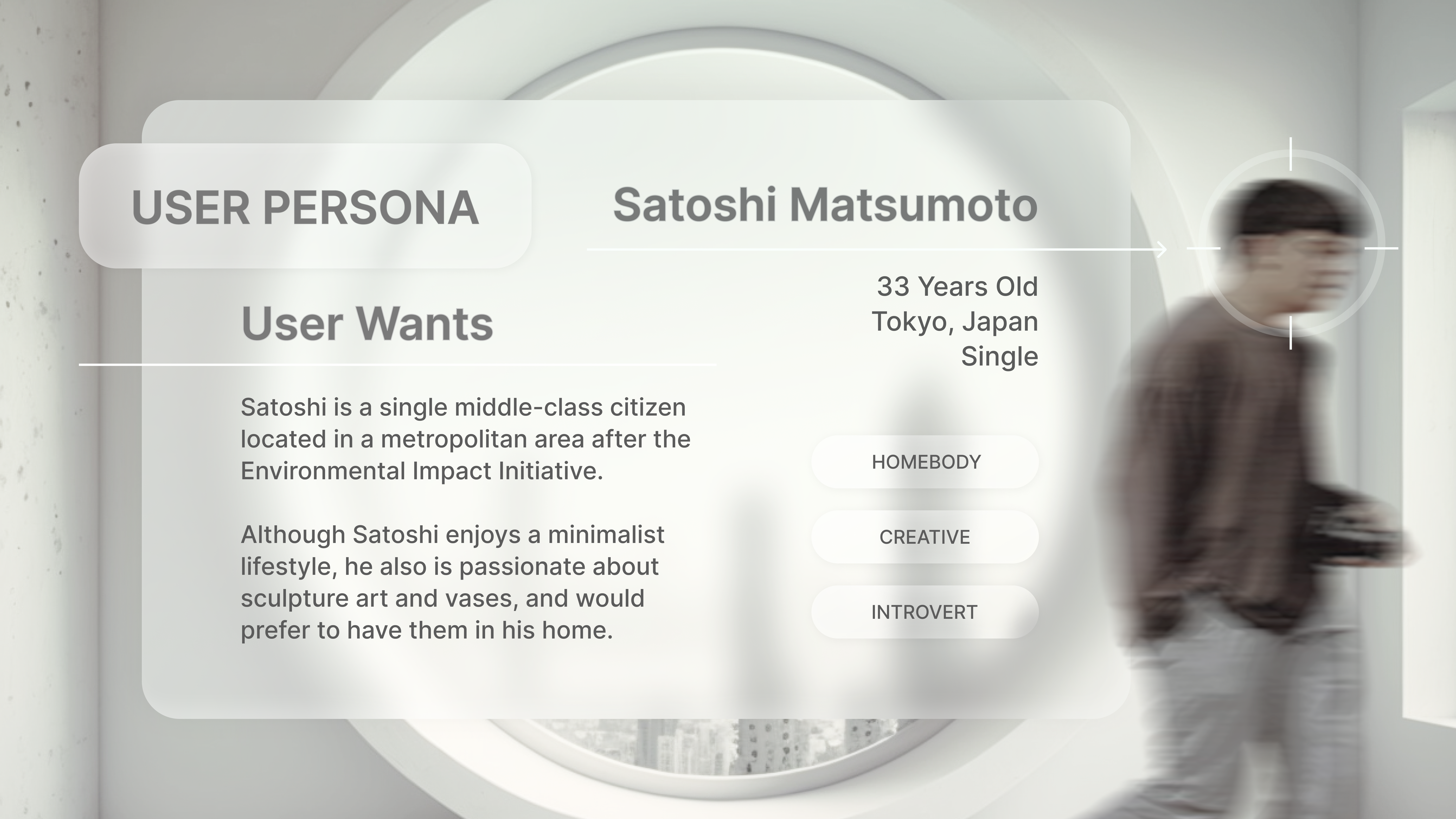
A visual language.
I took a lot of design cues from from science-fiction media and a few similar products that are on the market today.

PHYSICAL IDEATION
InDec’s Console
A fun part of this project and something I had pretty limited experience with, was visualizing first what InDec’s console would look like. Although I was unable to fabricate anything physically, I did want to design a console under principles of functionality and not just form. In other words, if this physical product existed– I would want it to work.
 Ideating InDec’s Console
Ideating InDec’s Console
Shape
I did several searches for understanding what the best device shape would be when it comes to designing a hologram/projection device or similar. The shape of the device itself did not matter, as long as the holographic lens was circular. I played around with the idea of having the console in both a rectangular or a triangular shape, but ultimately chose to move forward with a cylindrical style after some more research. According to the company Triana, cylindrical packaging offers benefits to users I hadn’t considered. For starters, cylinder-shaped things are better ergonomically for human hands. They also are more portable, because of how they rest against each other easily when placed in a bag or box, versus rectangular or triangular items having to be purposely stacked. Designing a device with no edges also allows the device to be placed around the room and in more areas with relative ease.
Style
I wanted the console itself to be chic, matte and minimal. Almost reminiscent of an Apple product. There can’t be anything too flashy about it, so it won’t clash with anything physical in someone’s space. Buttons are likely to take on the style that brands like Apple and Huawei utilize; a form of minimalism characterized by a soft and light look with low contrast. Elements are usually the same color as the background, and are only distinguished by shadows and highlights surrounding the element.
Color
InDec should be designed in a white or grey color to start, as that probably is the most likely to blend into the textures of one’s space better. Other colors are certainly a possibility.
Function
(Power on/off) There has to be a button that can turn the device on or off. This button will only affect the main console. The utility discs can be turned off from the hologram menu on the main console. (Charging Port) There is a charging port to charge the device. (Magnetic Charging) The discs that are used for displaying holographic furniture can be magnetically stacked to InDec’s main console to charge. All of the controls for their behavior or within the main console’s menu. (Charging Lights) There are 5 charging lights available that are illuminated green, which show you how much charge the device has left in increments of 20%. For example, if all 5 display a green light, the device is at 100% charge.
DIGITAL IDEATION
InDec’s Dashboard
InDec’s dashboard is a holographic-projection. Since devices like this either don’t exist or are still in their infancy, a lot the visual references I collected were from science-fiction media, such as movies and tv. Although there was a lot of variation within the appearance of the interfaces, I did find the colors to have a consistent theme. Most all of the holographic menus had visual components that were either white, neon blue or neon green in appearance.
Discovering these themes prompted a large question for my research. Was there a reason that hologram projections in science-fiction media look so similar?
Designer Abhishek Chitranshi seems to think so. Over at UX Collective, Abhishek did a wonderful deep dive on user interface trends throughout the years, and how technology will shape them in the future. “The vital requirements of holographic UI to make it meaningful , there has to be no background, there has to be thin border UI elements with no fill, there has to be neon or monochrome visuals, there has to be mature gestural technology.” (Chitranshi 2019) He backs up his findings with data that designers and scientists have accumulated over the years as ux/ui design principles extend into the metaverse. For the visuals of InDec’s console, I planned to follow suite with these ideologies.
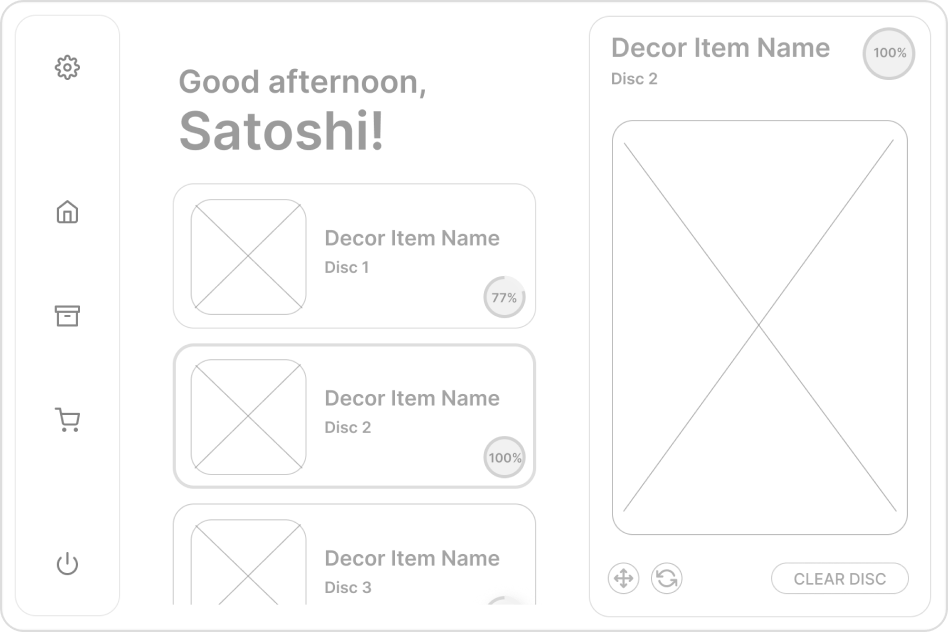
Ideating InDec’s Dashboard
INDEC IS BORN
Meet InDec,
The physical console
The main console consists of the hologram-lens on top, five lights that represent charge-level, an on/off button, and a USB port for charging. Beneath that are 3 discs, that attach to the main console via magnetization. Each disc has a hologram lens on top and are powered via the magnetization. They are controlled through the console alone, and do not have any interface controls of their own.
![]()
![]()
![]()
The digital interface
The holographic dashboard operates within three sections. The floater on the left hosts the navigation, the middle will display a list of the items that are in the room at present, and the window on the right will showcase the selected item and allow the user to rearrange that selection or clear the disc.
![]()
TAKEAWAYS
InDec was a rewardingly challenging project and I am more than happy I attempted it. Although I was able to design and visualize both parts, there’s still so much of InDec’s concept that I wished I had time to examine.
Some takeaways:
︎ Don’t over-do the visuals.
I don’t need a graphic or video for every single feature InDec has, I just need to get the point across enough to explain to viewers what InDec does. Less is best!
︎ Re-design the charging port!
I hadn’t put much thought into the location of the charging port and went with aesthetics instead of UX. The port’s location is poor UX. I plan to iterate on this and design a magsafe-esque charger for InDec.
︎ “Thinking will not overcome fear, but action will.”
I was intimidated by 3D software, but learning Blender for this project set me on a new path of excitement and design possibilities. Blender is now part of my toolbox, and I’m no longer scared to tackle Unreal Engine either!
Form
A user-interface projected into physical space should not have a background. Since a real life environment has depth and shadows, the user is able to see projected elements clearly when there is nothing else about the interface that competes for the user’s attention.
Style
Colors in holographic-projected interfaces are as light and bright as possible, due to the transparency of the projection. The most common colors used are white, neon blue, and neon green, and often times there are additional accent colors. Since the color choice is purely subjective, I decided to go with white with a neon blueish glow for InDec.
Function
True functionality was of the utmost importance to me for this project. FUI and data designer Sarah Kay Miller says, “in film, every set piece, costume, FUI, and HUD is designed to support the story and characters. With our own dashboards, we should have a clear goal of what needs to be achieved, with each element and chart designed to support that objective.” (Miller, 2019) The best way to approach this project would be to tackle the fundamentals like any other UX/UI project, which prompted me to create wireframes for the userflow.
INDEC IS BORN
Meet InDec,
your personal interior decoration device!
The physical console
The main console consists of the hologram-lens on top, five lights that represent charge-level, an on/off button, and a USB port for charging. Beneath that are 3 discs, that attach to the main console via magnetization. Each disc has a hologram lens on top and are powered via the magnetization. They are controlled through the console alone, and do not have any interface controls of their own.
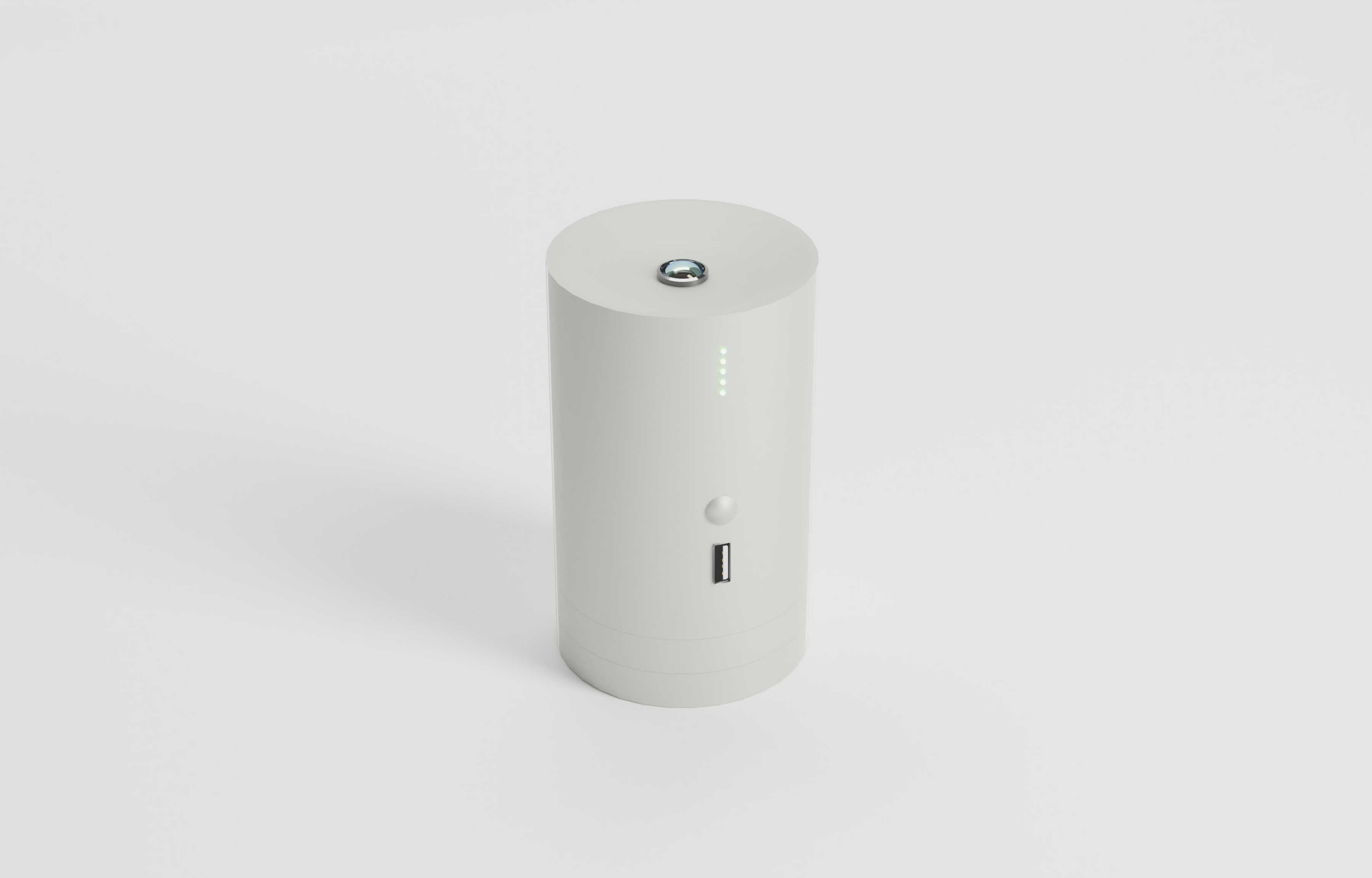
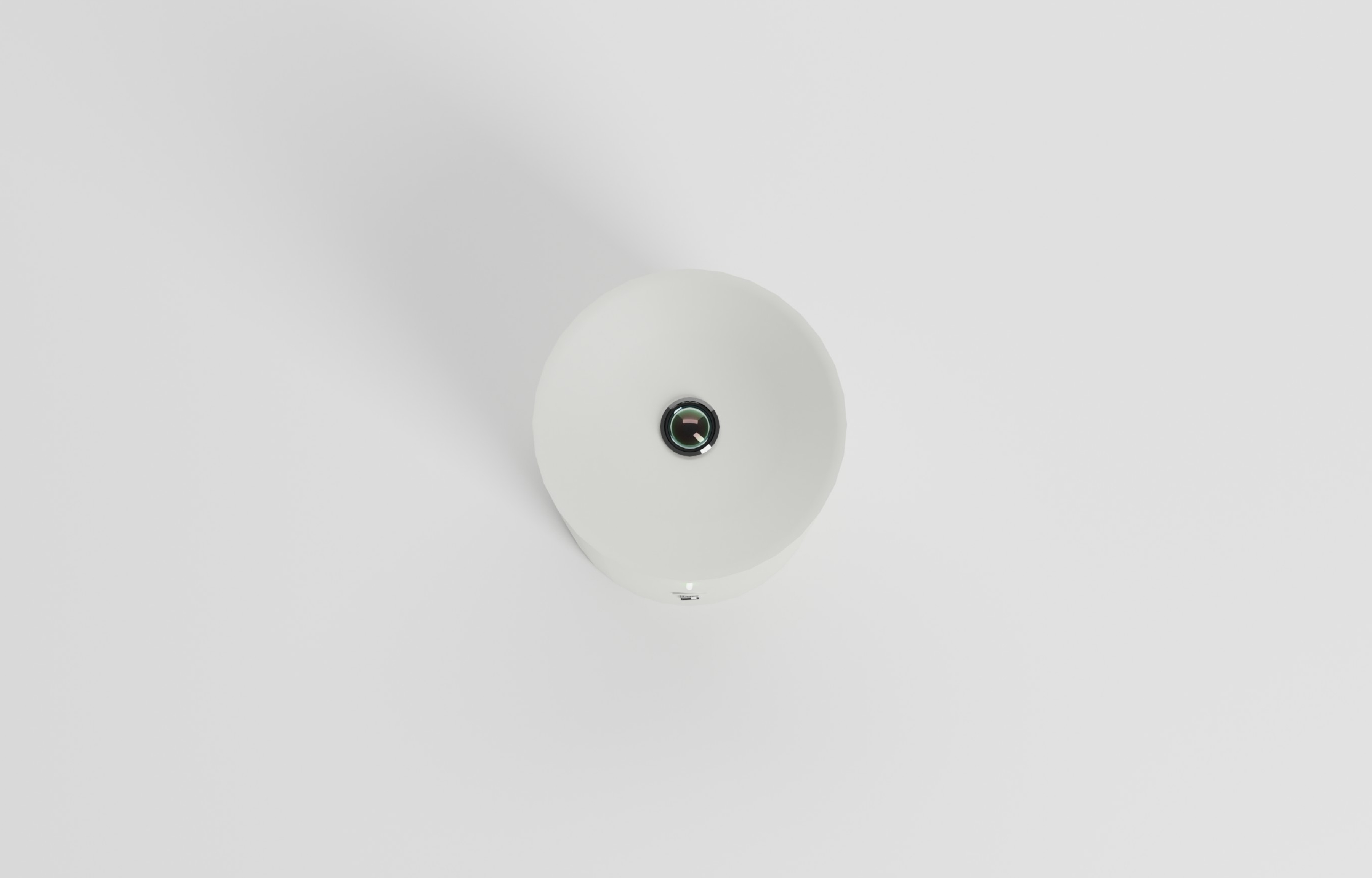
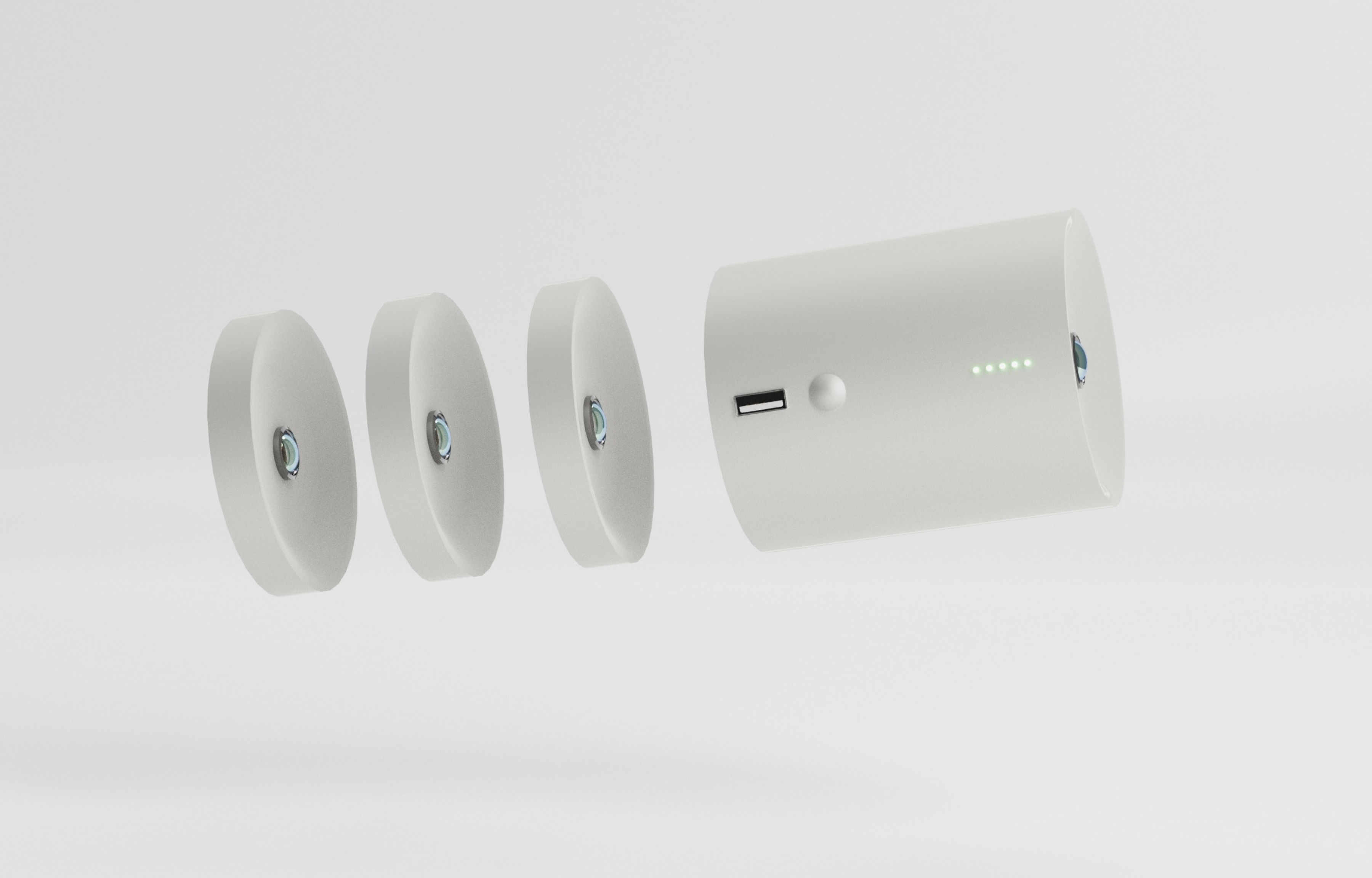
The digital interface
The holographic dashboard operates within three sections. The floater on the left hosts the navigation, the middle will display a list of the items that are in the room at present, and the window on the right will showcase the selected item and allow the user to rearrange that selection or clear the disc.
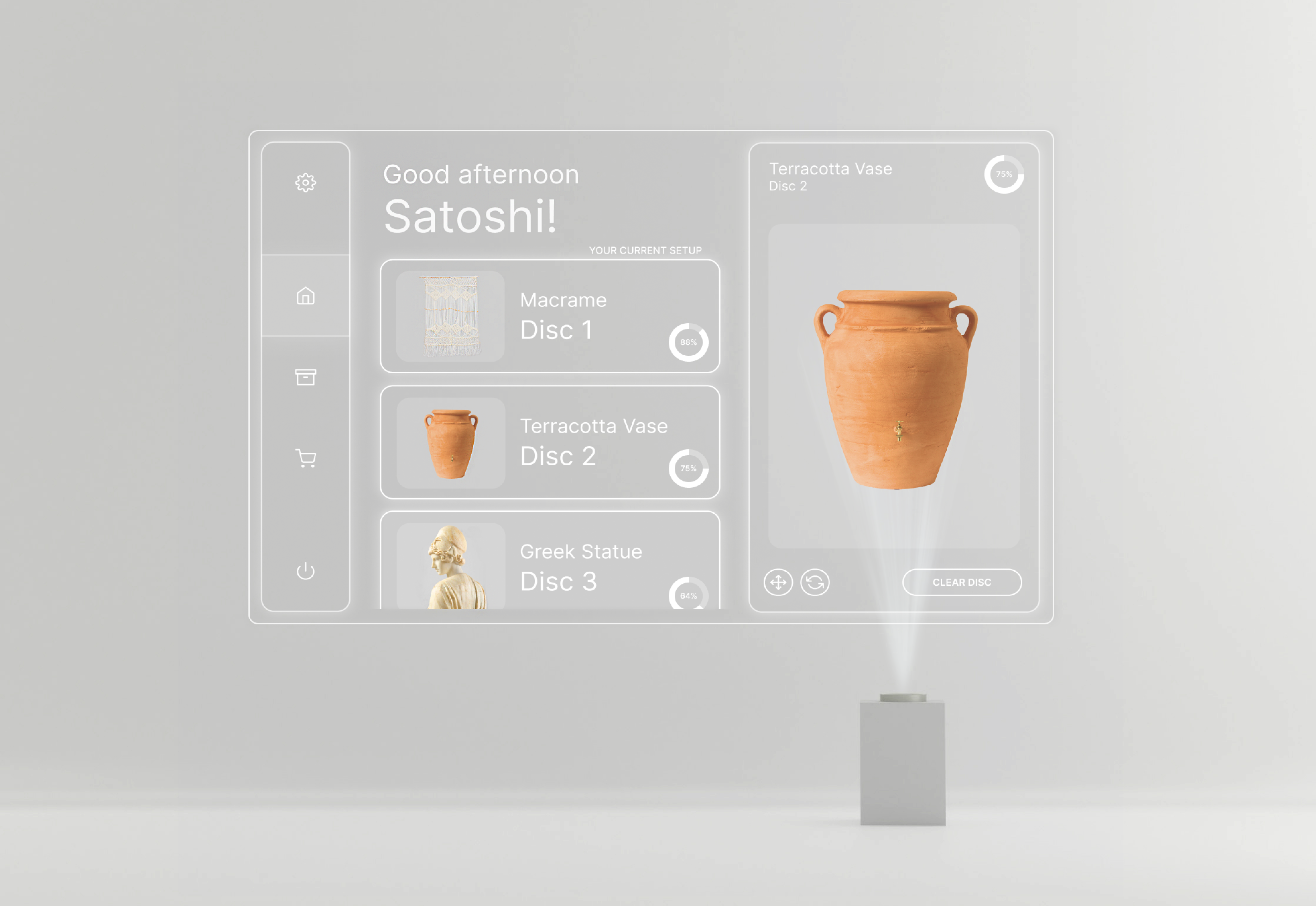
TAKEAWAYS
Challenge accepted, and accomplished.
InDec was a rewardingly challenging project and I am more than happy I attempted it. Although I was able to design and visualize both parts, there’s still so much of InDec’s concept that I wished I had time to examine.
Some takeaways:
︎ Don’t over-do the visuals.
I don’t need a graphic or video for every single feature InDec has, I just need to get the point across enough to explain to viewers what InDec does. Less is best!
︎ Re-design the charging port!
I hadn’t put much thought into the location of the charging port and went with aesthetics instead of UX. The port’s location is poor UX. I plan to iterate on this and design a magsafe-esque charger for InDec.
︎ “Thinking will not overcome fear, but action will.”
I was intimidated by 3D software, but learning Blender for this project set me on a new path of excitement and design possibilities. Blender is now part of my toolbox, and I’m no longer scared to tackle Unreal Engine either!